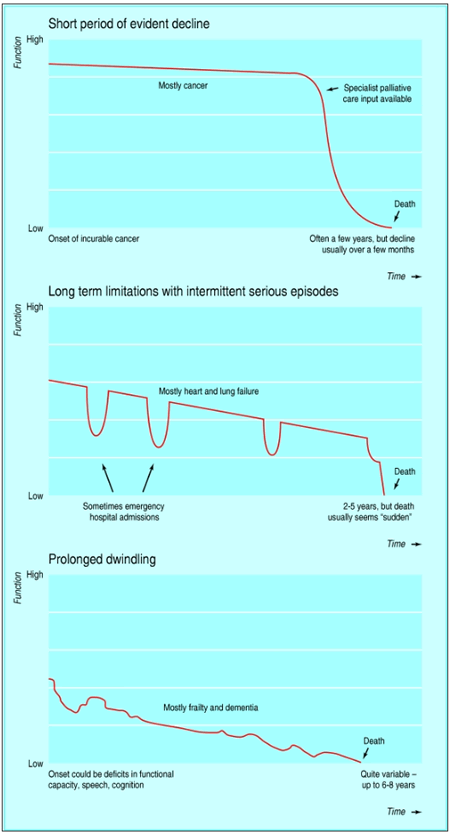
Heart failure/cancer disease trajectory (Murray et al 2005).
The rate of progression in individual patients is unpredictable. Three key factors contribute to the uncertainties experienced.
- Cardiac events which commonly precipitate hospitalisation, such as myocardial infarction, unstable angina, and AF can occur at any time
- Sudden death may occur at any point in the disease trajectory
- It can be difficult to identify when a patient is terminally ill
Reference: Scottish Partnership for Palliative Care
Three line graphs are shown in the diagram:
- Short period of evident decline – Mostly in cancer cases, from the onset of incurable cancer, a very gradual decline in function is finally replaced by a sudden deterioration; this is often after a few years but the decline usually happens over a few months. Specialist palliative care input is available once the final decline begins.
- Long-term limitations with intermittent serious episodes – Mostly in cases of heart and lung failure, the serious episodes are sometimes emergency hospital admissions; short-term function is recovered after the end of each episode but the long-term loss of function resumes its original trajectory. Decline takes 2–5 years but the death usually seems “sudden”.
- Prolonged dwindling – Mostly in frailty and dementia, function is lost on an erratic trajectory which includes some short-term remission; onsets could be deficits in functional capacity, speech and/or cognition. The timeline to death could be quite variable, up to 6–8 years.
Page last reviewed: 29 Jul 2020


